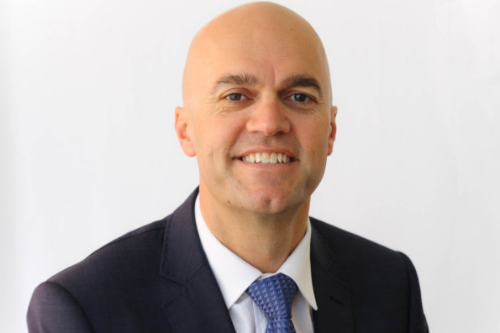

According to the National Trust, Tasmania has the highest concentration of heritage sites in Australia. John Farrell (pictured), director of Steadfast Taswide Insurance Brokers should know - his brokerage uses three heritage buildings as offices.
“Two of them are mid-1800s that we run business out of. They’re lovely,” said Farrell.
The Steadfast Taswide Launceston office was a hotel and pub.
“It was called the Courthouse Hotel, but prior to that it was actually the original courthouse of the area. The jail was diagonally opposite and they used to bring the prisoners in underground and up into the cells and then bring them into the courthouse,” he said.
Steadfast Taswide recently bought the building and renovated it after it was occupied by one of the unions, and before that the Tasmania Fire Service.
The office in Hobart, said Farrell, was originally a house designed by one of Tasmania’s leading architects, Henry Hunter, in 1855. Their third heritage listed office is in Burnie and dates back to 1913.
Not surprisingly, Farrell is well versed in the difficulties of securing commercial property insurance for heritage listed buildings. He also says it’s difficult enough getting commercial property insurance for non-heritage buildings. This is especially true for non-standard constructions made from materials other than bricks and mortar.
“If you’ve got a structure that’s built out of things other than brick and concrete, depending on who’s in it, we’re seeing quite hefty price increases in that area as well,” he said.
Hotels, pubs and other venues that prepare cooked food and have cool rooms are finding securing insurance coverage for their properties particularly difficult.
“It’s increasingly hard to place and getting expensive,” said Farrell.
He said one issue that can increase coverage costs is the use of expanded polystyrene (EPS) in cool rooms. EPS is an efficient insulator at low temperatures and is often concealed behind plasterboard, sheet metal, concrete walls or in ceilings.
According to the Steadfast website, “Whilst in recent years we have seen more and more buildings use a primary fire retardant in EPS foam insulation such as Hexabromocyclododecane (HBCD) to promote increased fire resistance in EPS building and construction applications, the number of properties is still small in comparison.”
If a fire causes the polystyrene to catch light it can be very hard to put out, increasing the damage costs, said Farrell.
He said the rising cost of commercial property insurance reflects a trend of price increases across other parts of the insurance industry.
The Australian Prudential Regulation Authority (APRA) raised concerns about the commercial property market several years ago and warned that it would adjust its supervisory intensity in response to worsening trends.
Read more: APRA chief to insurers: Get house in order
According to Fairfax Media, during an insurance conference in Canberra, Geoff Summerhayes, who at that time was APRA’s insurance chief, said the regulator might have to step up its supervision of the sector if commercial property insurers failed to resolve ‘stability and sustainability’ concerns.
“It’s hard going at the moment on certain risks - we’re certainly seeing diminished capacity, diminished opportunity and diminished insurers, which means the consumer pays more,” said Farrell.
He said the last three years had been especially difficult in the Australian insurance market.
“Last year it got to settle a little because of the COVID situation and most insurers were pretty gentle. Capacity in the Australian insurance market right now is tight because of storms, because of bushfires, because of floods,” he said.
Farrell said these are some of the factors playing into this hard market.
“When’s the cycle going to end? Where are we in the cycle? That’s the problem, nobody knows. And again, you don’t need to be Einstein to work out right now why it’s difficult,” he said.
Earlier this month, Ausure chief executive Scott McCarthy expressed a similar view in an interview with Insurance Business.
“I don’t think the cycle will be like what we’ve been used to in the past where it’s always been depicted by a circle or a clock. I don’t think it will be like that anymore,” said McCarthy.
He said the insurance cycle clock doesn’t work anymore. McCarthy said things might get easier but the industry was unlikely return to a situation where mainstream insurers are really hungry for business.
“I think all brokers in Australia know all too well that traditional major markets are decreasingly offering the solutions that we need,” McCarthy said.
